A "PhotoComic" (a comic digest using still images from the show) was produced for Season 1, but no sequels were produced. I own it, but did not read it for this read-through as it adds nothing new.
For this post, I consumed the following stories:
I watched the television series on Disney+ and read my physical copies of the ten digest comics.
There was also a video game called Clone Wars Adventures, a massively multiplayer online roleplaying game aligned with the 3D cartoon The Clone Wars. I have not covered this here, and to my knowledge it had no unique story worth covering at all.
Story:
Much of the Clone Wars cartoon's first two seasons focussed on one story, the Battle of Muunilinst. The Republic's clone army attacks Muunlinst, the capital of the Banking Clan (one of the corporate armies aligned with Count Dooku's Confederacy of Independent Systems). Obi-Wan Kenobi leads the ground forces while Anakin Skywalker takes a leadership role in the battle in space. During the battle, Obi-Wan and the clones face off against the alien bounty hunter Durge, who is serving as a general for the Separatists, while Anakin chases the starfighter of Sith assassin Asajj Ventress to Yavin 4 and duels her among the ruins.
Nine of the twenty short episodes veer off to tell other stories of Clone Wars heroism and villainy. These include:
- Two episodes focussing on Asajj Ventress and her first meeting with Count Dooku. She wins an arena battle against numerous battle droids and creatures, handily defeating them with her twin lightsabers, though she is no match for Dooku. Still, he and Darth Sidious see something in her and recruit her as an assassin.
- Three episodes are set on Ilum, where Separatist sabotage droids attack the Jedi temple there. Master Luminara Unduli and her Padawan Barriss Offee must defend themselves and hold back the wreckage of the temple until their rescue by Master Yoda, supported by Senator Padmé Amidala and her droids, R2-D2 and C-3PO.
- Two episodes see Master Mace Windu fight the Separatists on Dantooine, where he singlehandedly destroys a gigantic "Seismic Tank."
- One episode is set on the homeworld of the Mon Calamari and the Quarren, the former being Republic aligned and the latter being Separatist. We focus on the naval forces of the Republic, led by Jedi Master Kit Fisto.
- The final episode of the season sees the introduction of General Grievous, in an event that would be called the Battle of Hypori, where at least three Jedi are killed, numerous others wounded (including named characters like Shaak Ti, Ki-Adi-Mundi, Aayla Secura, and K'Khruk), and countless clones are lost.
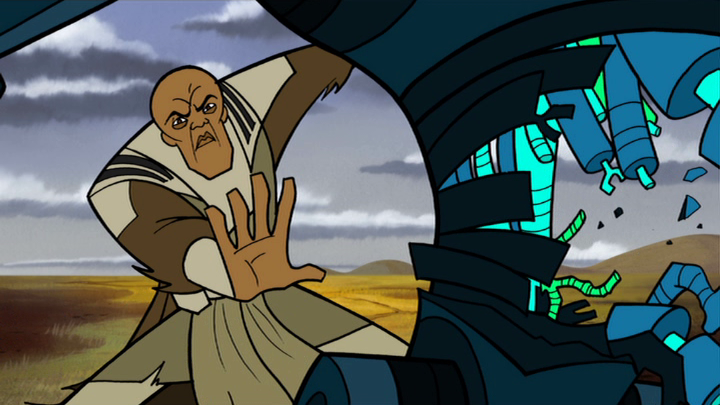 |
| Mace Windu fighting battle droids on Dantooine in Chapter 13. Image from Wookieepedia. |
The Clone Wars Adventures digests each contained three or four short stories. These little stories mostly depict other battles across the three years of the Clone Wars, focussing on a variety of different characters. Some examples include:
- Blind Force: Anakin and Obi-Wan must destroy a droid factory on Nivek, in complete darkness.
- Fierce Currents: A sequel to the Mon Calamari/Quarren story in Chapter 5, where a new species of telepathic jellyfish are helping the Separatists.
- Rogue's Gallery: Asajj Ventress and Durge face off against General Grievous.
- Orders: Republic Commandos rescuing a boy on Garqi, only for him to witness Order 66.
- Descent: Clones, now working for the Empire, hunt Chewbacca and other Wookiees on Kashyyyk
- The Order of Outcasts: The Republic lands on a planet occupied by criminals, but clones turn on the Jedi during the battle, resulting in a Padawan aligning himself with the outcasts.
- It Takes A Thief: Jedi Master Saesee Tiin, with the help of a local thief, steals an experimental Separatist starfighter from the planet Diado.
- Spy Girls: On Coruscant, Padmé and one of her handmaidens spy on a potentially traitorous senator.
- Versus: Jedi Master Luminara Unduli must duel creatures in a Hutt's arena to get intel, while a masked figure places bets that throw off the odds, resulting in them bankrupting the Hutt.
- Pathways: A single battle droid develops self awareness and decides not to fight.
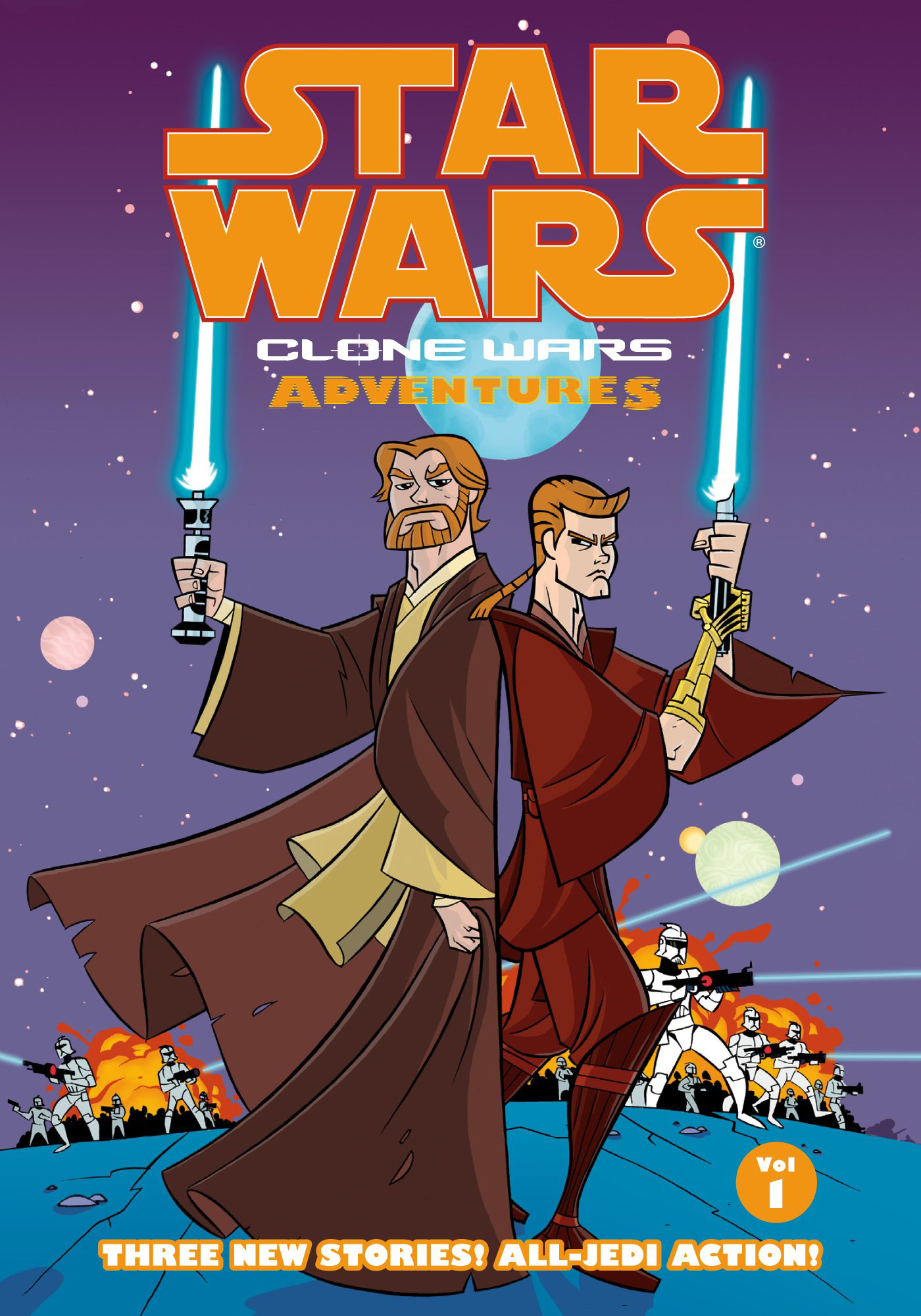 |
| Cover of Clone Wars Adventures Volume 1. Image from Wookieepedia. |
Thoughts:
First, I absolutely love the art style of Genndy Tartakovsky's Clone Wars. Everything is bright and colourful. The battles are massive in scope, with dozens of vehicles and hundreds of clones and droids fighting across multiple battles.
I particularly like the flashback of Chapters 6 and 7, which depict the first meeting of Count Dooku and Asajj Ventress. She handily defeats an arena full of opponents, impressing the Count and his master. Her fighting the various creatures and monsters was certainly entertaining.
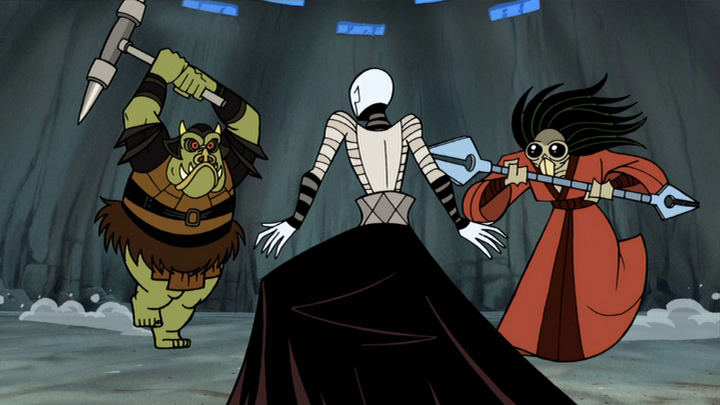 |
| Asajj Ventress about to fight two gladiators in the arena on Rattatak in Chapter 6. Image from Wookieepedia. |
The story of Asajj Ventress is one of the more compelling arcs over the course of the Clone Wars in both Legends and New Canon. We've met her already in issues of Republic, and her story will get a satisfying conclusion later in the conflict. Here we see her first meeting and an excellent duel with Anakin, in which he must touch the Dark Side to gain an upper hand. Her story changed in the New Canon, and sadly one of the things apparently not kept was the arena fight, but her new story is equally interesting.
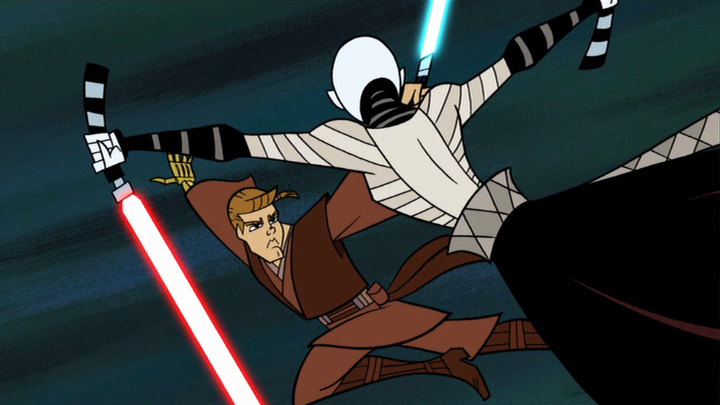 |
| Anakin Skywalker dueling Asajj Ventress on Yavin 4 in Chapter 18. Image from Wookieepedia. |
The various tales told in the cartoon and comic can be thought of as one-off adventures in the lives of the Jedi and clones, none of which tying together in any meaningful way. Over the three years of the war, the heroes are pulled to dozens of planets, each with a story to tell.
Regrettably for my purposes, the stories in Clone Wars Adventures are set all over the timeline of the Clone Wars. I wanted to focus on stories early in the conflict, but I'm not going to pick and choose which individual story I'm covering at a time. As a grab bag of mixed stories, I see the appeal of organizing it randomly like this. It is simply inconvenient that I'm reading some stories set at the war's end right now.
Some of the comic stories were silly, like a clone squad that uses umbrellas to fall from the sky, or monkeys stealing rockets, or chef Dexter Jettster's adventure to find an ingredient. But these cartoons and tie-in comics were meant for young children, so I can easily forgive it.
As with my last post, I want to note that the New Canon did draw some inspiration from these stories. Asajj Ventress's starfighter and costume were featured in one episode of The Clone Wars. Kit Fisto's defense of the Mon Calamari homeworld (now named Mon Cala) is depicted in a trilogy of episodes. Mace Windu's defense of Dantooine is referenced in an episode as well. The Battle of Muunilinst, the main story for Anakin and Obi-Wan in both seasons, is referred to in canon reference books though has not been depicted. Other Banking Clan worlds were shown throughout The Clone Wars, as that series established that some of the corporate entities officially remained neutral while some of their leadership joined the Separatists against the will of the corporation (though this has proven to be a lie, and representatives for the Banking Clan and Trade Federation in the Republic Senate were always Separatist spies). Finally, the snow and ice world of Ilum, where Barriss Offee finds a new lightsaber crystal, was seen in The Clone Wars, as well as the video game Jedi: Fallen Order. It is still where most Jedi would go to find the kyber crystals for their lightsabers, having later been strip-mined by the Empire in support of the Death Stars and transformed into the First Order's Starkiller Base in Episode VII: The Force Awakens.
Next:
My next Legends post (Part 20) will conclude my coverage of the early novels and comics, in post I'll call "Early Clone Wars, Part 2". Following that, I will cover two more focussed story sets, that of the Republic Commandos and that of young Boba Fett, before moving on to the Legends stories tied into the 3D animated series Star Wars: The Clone Wars.





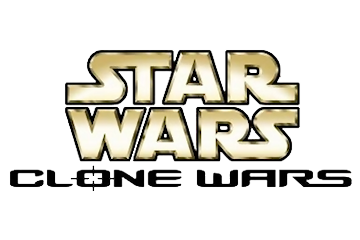
Comments
Post a Comment